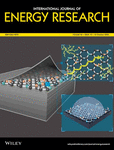Facile synthesis and composition-tuning of bimetallic PbCd nanoparticles as superior CO2-to-HCOOH electrocatalysts
Funding information: National Natural Science Foundation of China, Grant/Award Number: 22072087
Summary
CO2 reduction to produce value-added chemicals/fuels is generally considered as an effective way to solve the energy crisis and global warming. However, the greatest challenge to the technology is the lack of high-performance catalysts as this process is quite sluggish under mild conditions. Herein, we have carefully prepared a series of bimetallic PbxCdy nanoparticles (NPs) as well as their monometallic counterparts via a facile chemical reduction. Electrocatalytic performances of obtained catalysts were evaluated with respect to chemical composition, electrolytic potential, and so on. All of them exhibit high performance and achieve high faradaic efficiency for HCOOH production (FEHCOOH) over a voltage window of −1.16 to −1.26 V vs the reversible hydrogen electrode (VRHE). Among them, Pb3Cd1 achieved a maximum FEHCOOH of 96% at −1.16 VRHE and a desirable stability over 12 hours of continuous electrolysis. The excellent performance of Pb3Cd1 can be attributed to the huge specific area of NPs and the synergistic effect of the components. This study shows that efficient bimetallic PbxCdy electrocatalysts have a large application potential for highly selective HCOOH production from CO2.
Highlights
- Bimetallic PbCd nanoparticles were synthesized by facile chemical reduction for electrocatalytic CO2 reduction.
- PbCd nanocatalysts performed well in highly active, selective, and stable HCOOH electrosynthesis from aqueous CO2.
- Pb3Cd1 achieved maximum HCOOH faradaic efficiency of 96% at −1.16 VRHE, a record as far as we know.
- A stable current density (>7 mA cm−2) can be kept after a 12-hours continuous electrolysis.
Open Research
DATA AVAILABILITY STATEMENT
The data that support the findings of this study are available from the corresponding author upon reasonable request.




